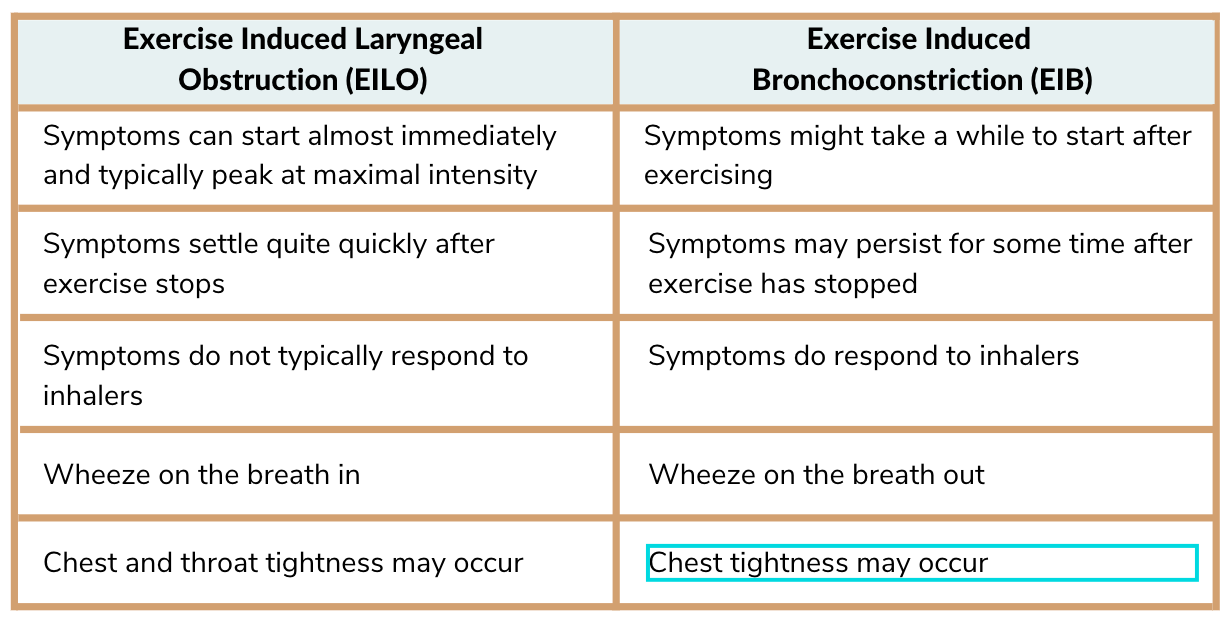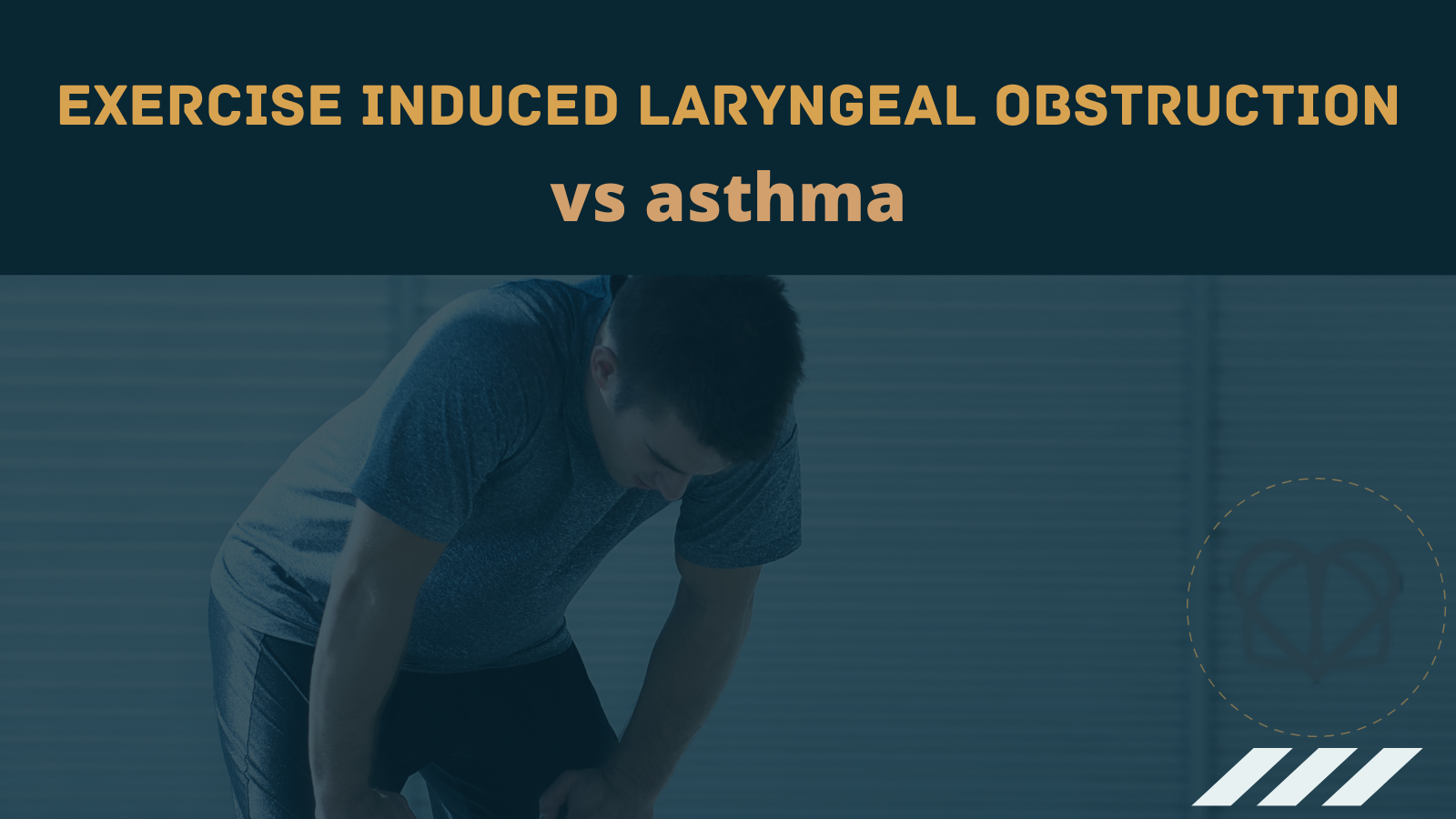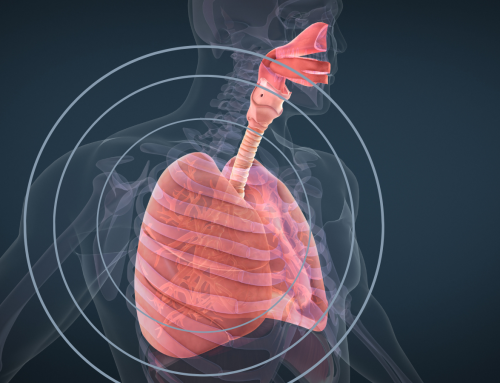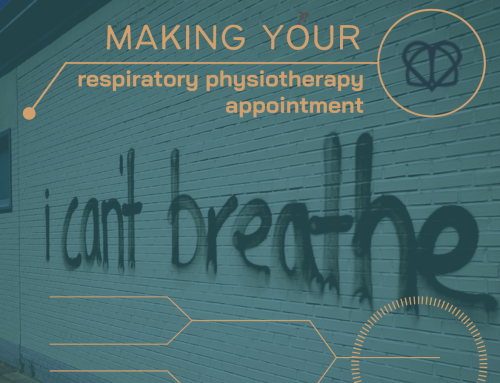We see a number of adolescents or young adults here at Air Physiotherapy that have no past medical history but present with wheezing and breathlessness when they exercise. In some cases they have been misdiagnosed with exercise-induced bronchoconstriction (EIB) or asthma because of its association with wheeze and increasing exercise intensity. They may also have been prescribed a short-acting bronchodilator which is prescribed medication for asthma.
But sometimes these symptoms are a result of a lesser-known condition: exercise induced laryngeal obstruction (EILO).
What is exercise induced laryngeal obstruction?
EILO is a physiological phenomenon where the larynx (voice box) narrows during high-intensity exercise, which then causes airflow to be reduced. It leads to the inability to perform strenuous activity at a level that should be normal for an individual’s age, size and fitness level.
The main symptoms are:
- Shortness of breath
- Chest and/or throat tightness
- Feeling you are “breathing through a straw”
- Stridor/wheezing
- Difficulty with inhalation and/or exhalation
- Frequent throat clearing
- Intermittent hoarseness
- Chronic cough
The reason why it occurs in some patients is unknown, but it appears to be more prevalent in girls and has a peak age of onset in the teenage years.
What’s the difference between EILO and asthma?
We’re often asked what the difference is between the two and there are some distinct differences:

How is EILO diagnosed?
The gold standard test for the diagnosis of EILO is the continuous laryngoscopy during exercise (CLE) test.
This involves wearing specialist headgear to which a flexible laryngoscope is fixed. A local anaesthetic gel or spray will be applied to numb one of your nostrils before the laryngoscope is gently passed up the nostril to the back of your throat. It may be a little uncomfortable but won’t be painful. You will then exercises on a stationary ergometer bicycle or a treadmill and your laryngeal movement is recorded by video.
How is EILO treated?
Respiratory physiotherapy and speech and language therapy currently form the basis of treatment. You’ll be taught breathing control techniques to improve your laryngeal abduction during exercise.
Your physiotherapist will also talk through other strategies to improve laryngeal hygiene (for example, avoiding smoking, regular fluid intake, and avoiding dietary caffeine).
If you’d like to know more about EILO please email enquiries@airphysiotherapy.co.uk or book an appointment with us online now.





